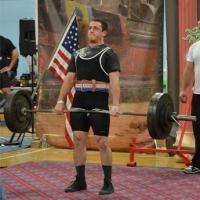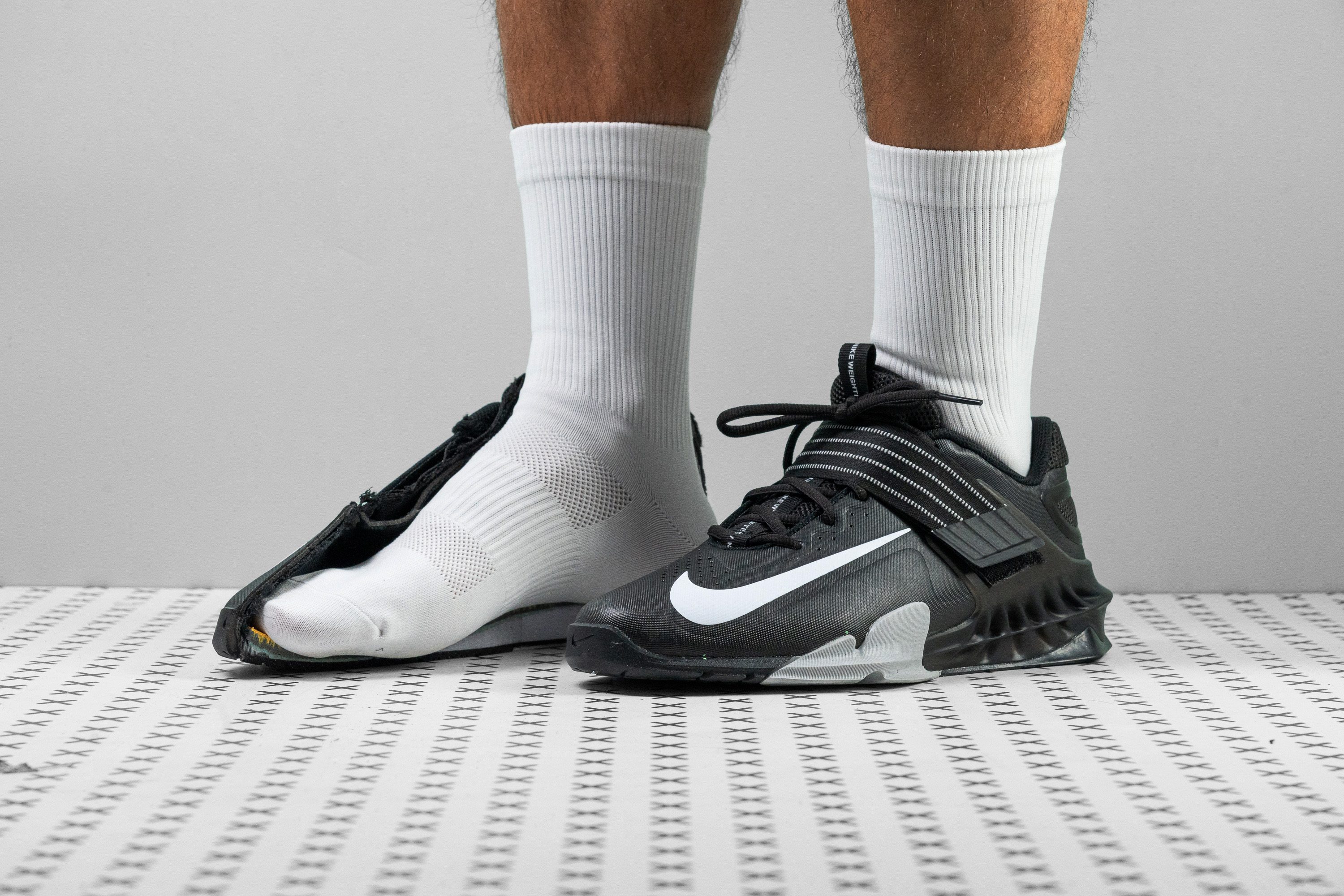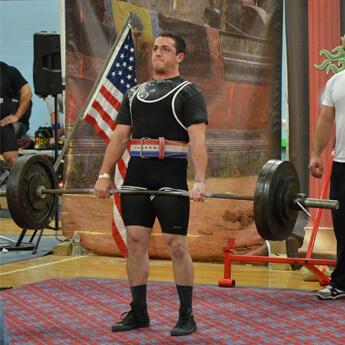Our verdict
- Top pick in best Nike weightlifting shoes
- Top pick in best Nike cross-training shoes
Pros
- Superb stability for moderate lifting
- Good for non-lifting exercises
- Very lightweight for a lifter
- Secure lockdown
- Flexible forefoot
- Excellent grip
- Comfortable in-shoe feel
- Reasonably priced
Cons
- Not for heavy weightlifting
- Not for wide feet
- Upper lacks durability
Audience verdict
- Top 24% in Nike training shoes
Comparison
The most similar training shoes compared
+ + Add a shoe | |||||
|---|---|---|---|---|---|
| Audience score | 87 Great! | 91 Great! | 90 Great! | 87 Great! | |
| Price | $120 | $200 | $120 | $220 | |
| Use | WeightliftingGymPowerlifting | WeightliftingGymPowerlifting | WeightliftingGymPowerlifting | WeightliftingGymPowerlifting | |
| Shock absorption | Moderate | Low | Low | Low | |
| Energy return | Moderate | Low | Moderate | Low | |
| Traction | - | - | High | Low | |
| Drop lab | 15.1 mm | 20.5 mm | 15.2 mm | 20.5 mm | |
| Heel stack lab | 26.0 mm | 33.5 mm | 30.0 mm | 33.0 mm | |
| Forefoot | 10.9 mm | 13.0 mm | 14.8 mm | 12.5 mm | |
| Weight lab | 14.8 oz / 420g | 20.1 oz / 571g | 15 oz / 425g | 22.1 oz / 627g | |
| Breathability | Moderate | Warm | Warm | Warm | |
| Width / fit | Narrow | Medium | Narrow | Medium | |
| Toebox width | Narrow | - | Narrow | Narrow | |
| Size | Half size small | Half size small | True to size | True to size | |
| Midsole softness | Firm | Firm | Firm | Firm | |
| Stiffness | Stiff | Stiff | Stiff | Stiff | |
| Torsional rigidity | Stiff | Stiff | Stiff | Stiff | |
| Heel counter stiffness | Stiff | Stiff | Stiff | Stiff | |
| Toebox durability | Decent | Decent | Decent | Good | |
| Heel padding durability | Decent | - | Bad | Good | |
| Outsole durability | - | - | Decent | - | |
| Midsole width - forefoot | Very wide | Wide | Narrow | Very narrow | |
| Midsole width - heel | Very wide | Wide | Very narrow | Average | |
| Widths available | Normal | Normal | NormalWide | Normal | |
| Insole thickness | Thin | Very thick | Average | Average | |
| Outsole thickness | Average | Average | Very thick | Average | |
| Outsole hardness | Very hard | Very hard | Average | Very soft | |
| Heel tab | None | None | Pull tab | None | |
| Tongue: gusset type | Both sides (semi) | Bootie | None | None | |
| Tongue padding | Average | Very thick | Average | Thick | |
| Ranking | #14 Top 43% | #4 Top 13% | #9 Top 27% | #16 Top 48% | |
| Popularity | #17 Bottom 48% | #6 Top 19% | #13 Top 39% | #19 Bottom 44% |
Who should buy
We believe that the Nike Savaleos is a great match for gymgoers who:
- are new to weightlifting and need an entry-level shoe to get used to elevated heels
- are not ready to spend $160-$200 on a dedicated pair of lifting shoes
- only do lifting occasionally and are not aiming for PBs
- want a lifting shoe that can also do some box jumps, burpees, lunges, wall push-ups, etc.

Who should NOT buy
As a crossover between dedicated lifters and Crossfit trainers, we found that the Savaleos is okay for both activities but is not great at either.
If you intend to lift heavy (300+ pounds) on a regular basis, we highly recommend investing in the Nike Romaleos 4.
And if you can do without the elevated heel, go with the brand's flagship Crossfit trainer, the Nike Metcon 8. We found it to be mind-blowingly stable for lifting, even when it comes to heavy loads.
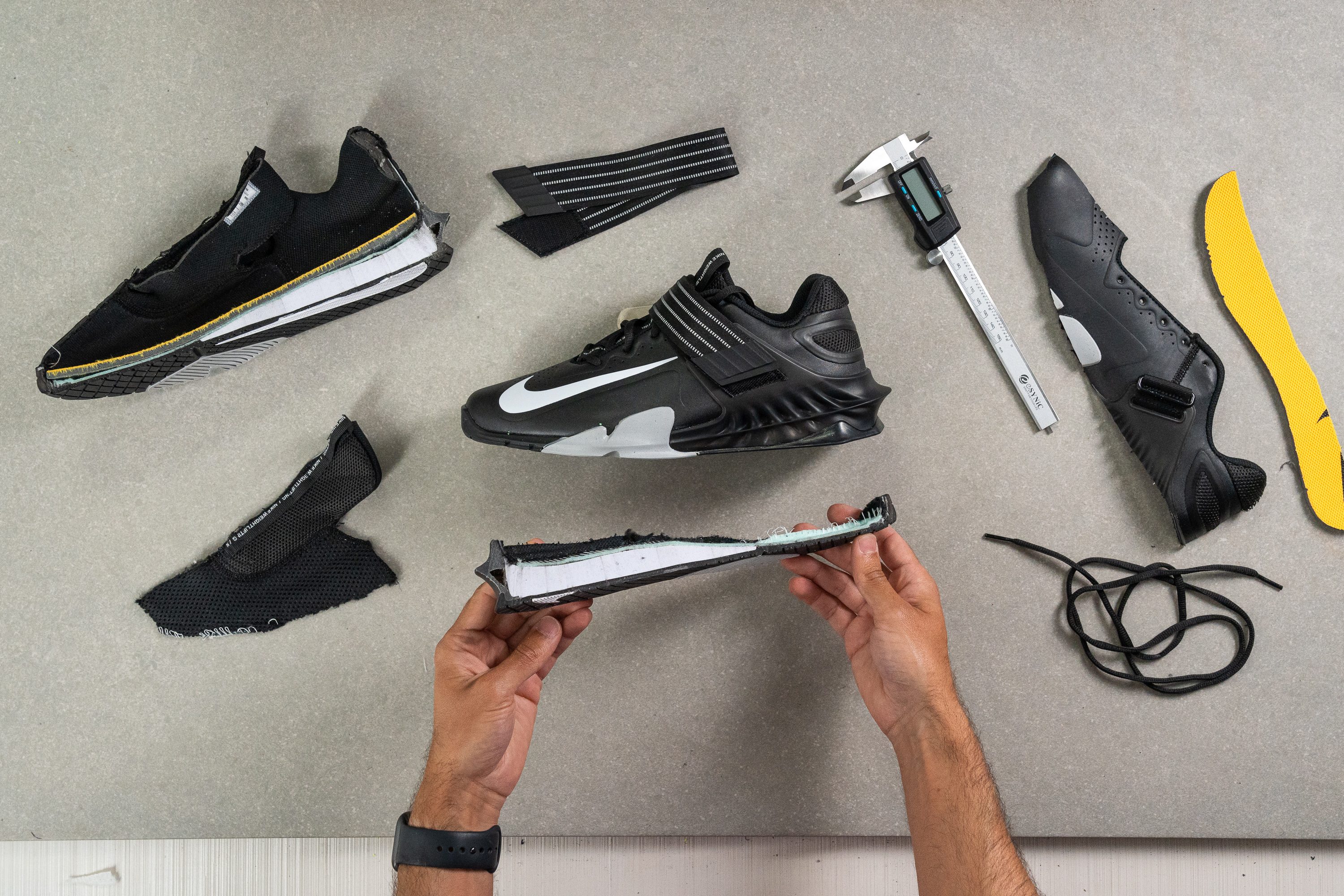
Platform
Shock absorption
The Savaleos' versatility shines through its high shock absorption measurement of 85 SA in the heel. It is notably higher compared to other lifting shoes and is on par with the average of cross-training shoes.
Even though it looks tough from the outside, this Nike shoe packs a slab of cushioning foam to support jumps and other HIIT movements.
However, its forefoot is just as thin and devoid of cushioning as all the other lifting shoes, with a low reading of 20 SA.
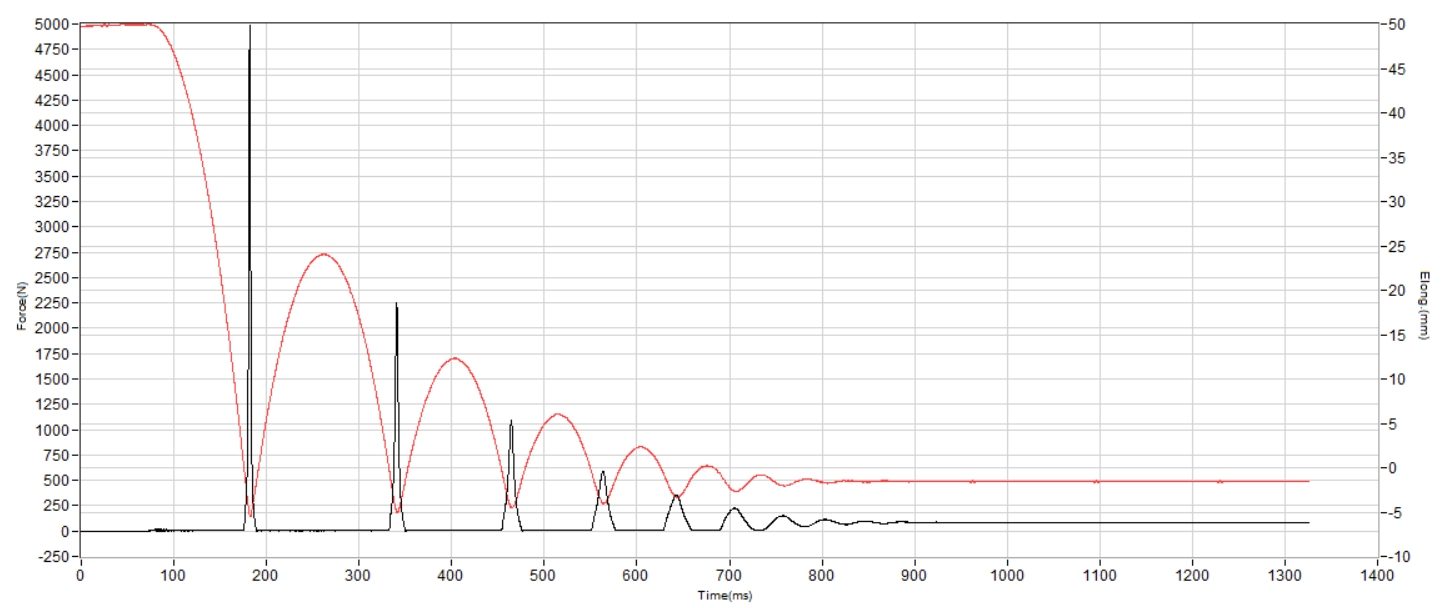
| Savaleos | 85 SA |
| Average | 48 SA |
Energy return
The presence of underfoot rebound is yet another indicator of the Savaloes' readiness for some dynamic exercises.
Measuring its energy return, we got above-average readings in both the heel (53.1%) and the forefoot (51.9%). These are not high enough to call this Nike shoe propulsive, but are decently elevated to make it stand out from a typical static lifter.
| Savaleos | 53.1% |
| Average | 47.0% |
Heel stack
For a semi-lifter, we expected the Nike Savaleos to have a lower stack height than the average lifting shoe. To be capable of performing exercises other than lifting, you need to feel closer to the ground.
Thus, we weren't surprised when our caliper showed only 26 mm of heel height. Interestingly enough, it is about the same as the average heel height of cross-training shoes (25 mm).
The Savaleos indeed felt low to the ground during our training sessions.
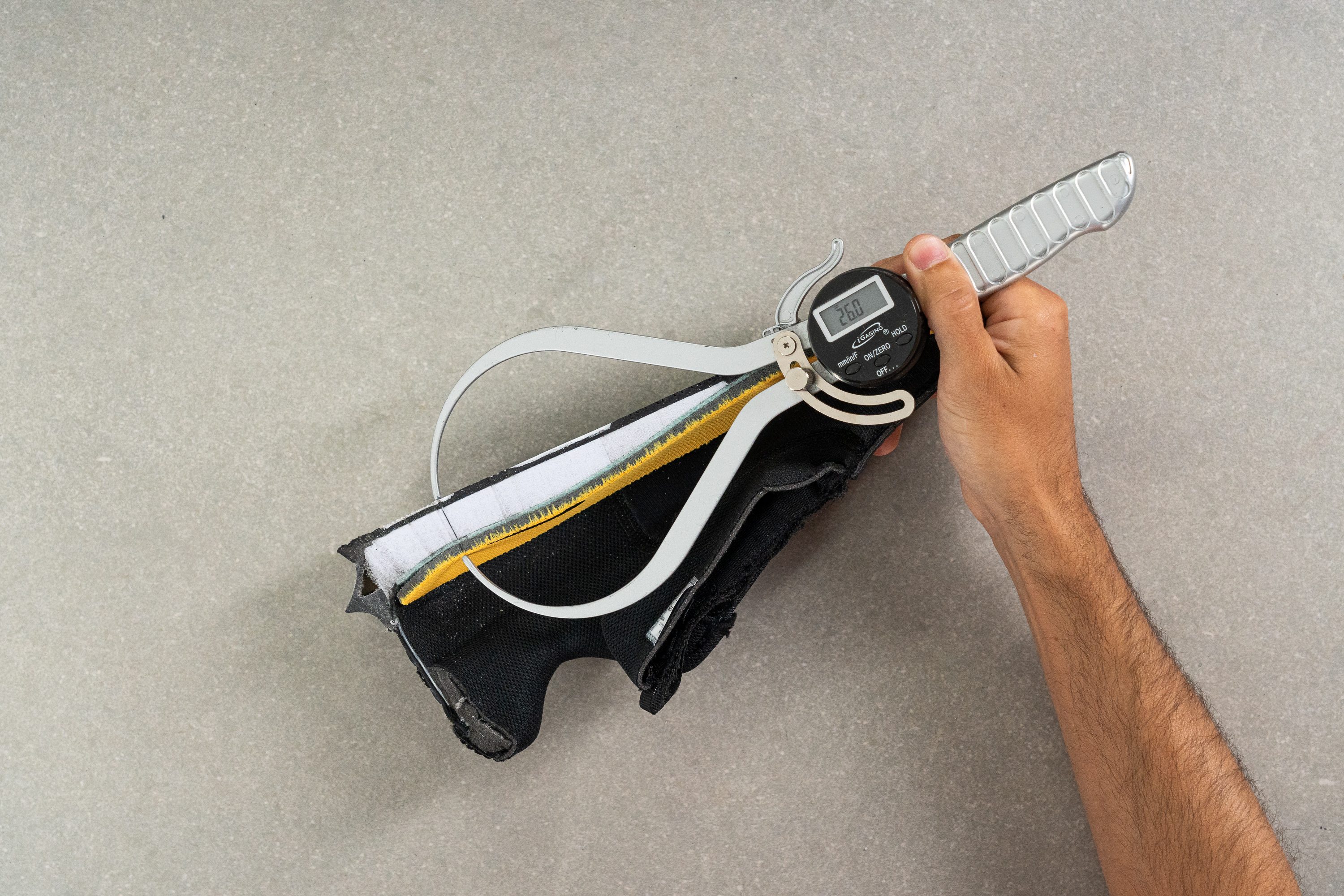
| Savaleos | 26.0 mm |
| Average | 28.3 mm |
Forefoot stack
In the forefoot, we measured the shoe's stack height at 10.9 mm. Also lower than the average.
We found that it definitely helps to feel planted for exercises like box jumps, where you need to be in control of the landings.
But on the downside, that thinner forefoot provided too little impact protection when we tried rope jumping in the Savaleos.
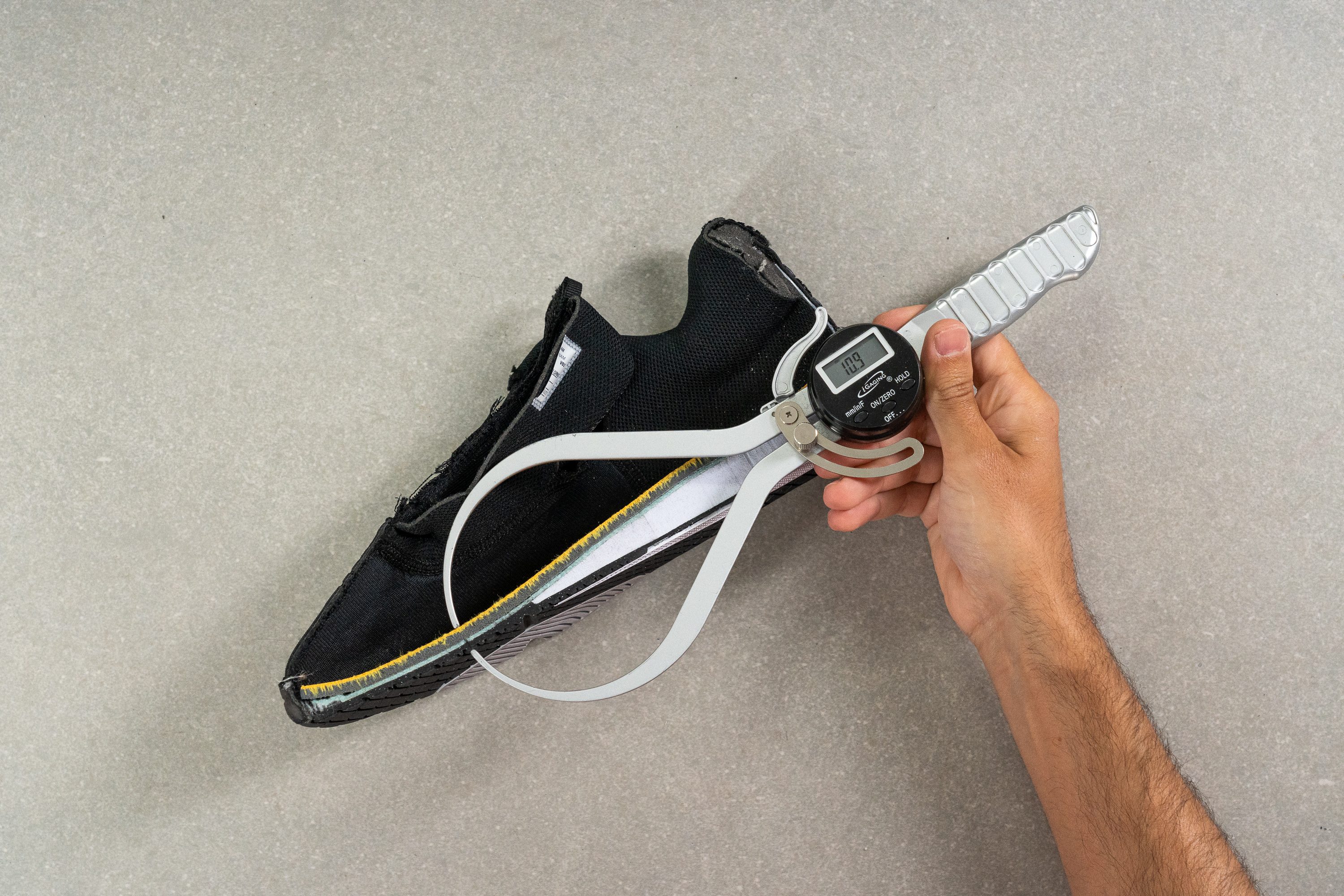
| Savaleos | 10.9 mm |
| Average | 12.9 mm |
Drop
The difference in stack measurements gave us a heel-to-toe drop of 0.6 inches (15.1 mm) in the Nike Savaleos.
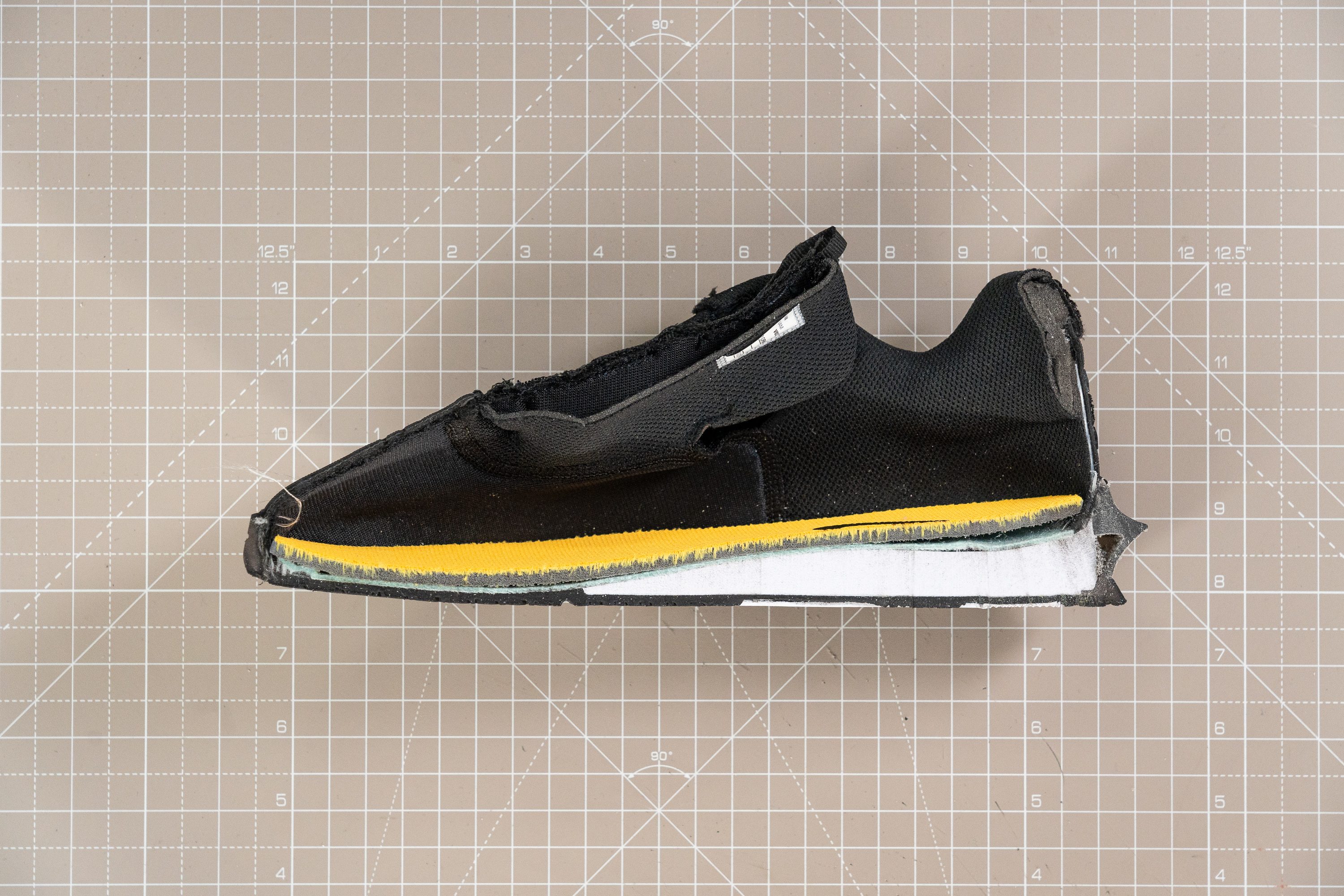
We have seen the same offset in entry-level lifters like the Adidas Powerlift 5. It places the heels higher compared to cross-trainers and puts your ankles, knees, and hips in a more ergonomic position to perform under heavy loads. With an elevated heel, you are able to achieve deeper squats with a more upright torso which, in turn, allows you to lift more efficiently and avoid injuries.
You can learn more about the benefits of heel elevation in our extensive guide on weightlifting shoes.
Advanced athletes choose lifters with an offset of 20+ mm for added benefit. The Nike Romaleos 4 (drop: 20.5 mm) is one such option.
| Savaleos | 15.1 mm |
| Average | 15.4 mm |
Platform firmness
Compression is the last thing you want to feel underfoot when raising a hefty barbell above your head. Thus, you need a hard platform in a pair of lifters.
We use a durometer to measure how hard each shoe's platform is. Normally, we see a value of 95-97 HA in a pair of dedicated lifting shoes. However, in the case of the Savaleos, our durometer returned only 36.5 HA...Is it THAT squishy?
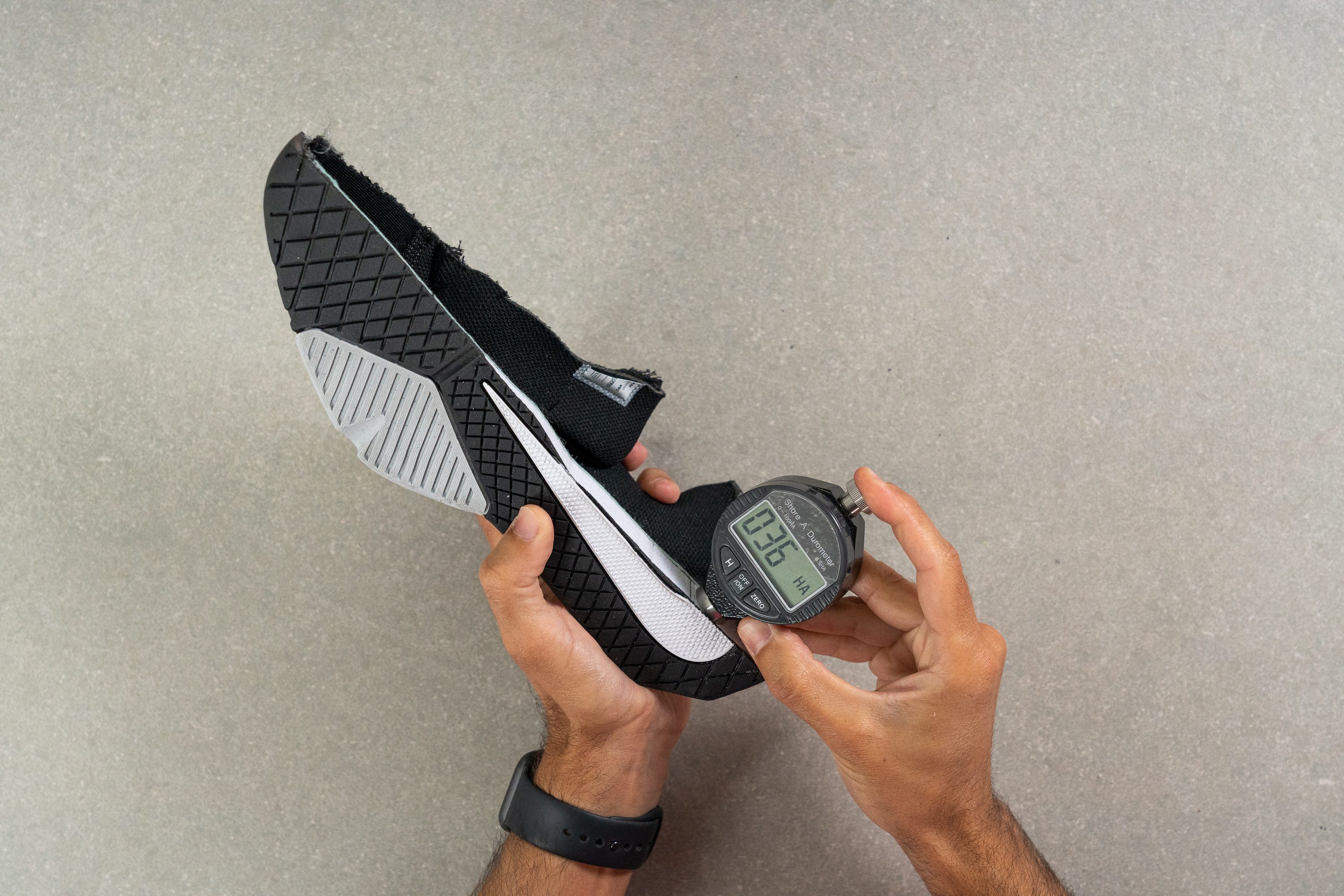
No!
Of course, being 50% softer than a typical lifting shoe, we wouldn't trust the Savaleos to handle anything more than 300 pounds. However, it still feels nice and firm underfoot, especially since the foam is locked inside a sturdy TPU cage.
To give you more context, the Nike Metcon 8 trainer has a durometer reading of 28.8 HA but we found it quite firm and incompressible when lifting heavy.
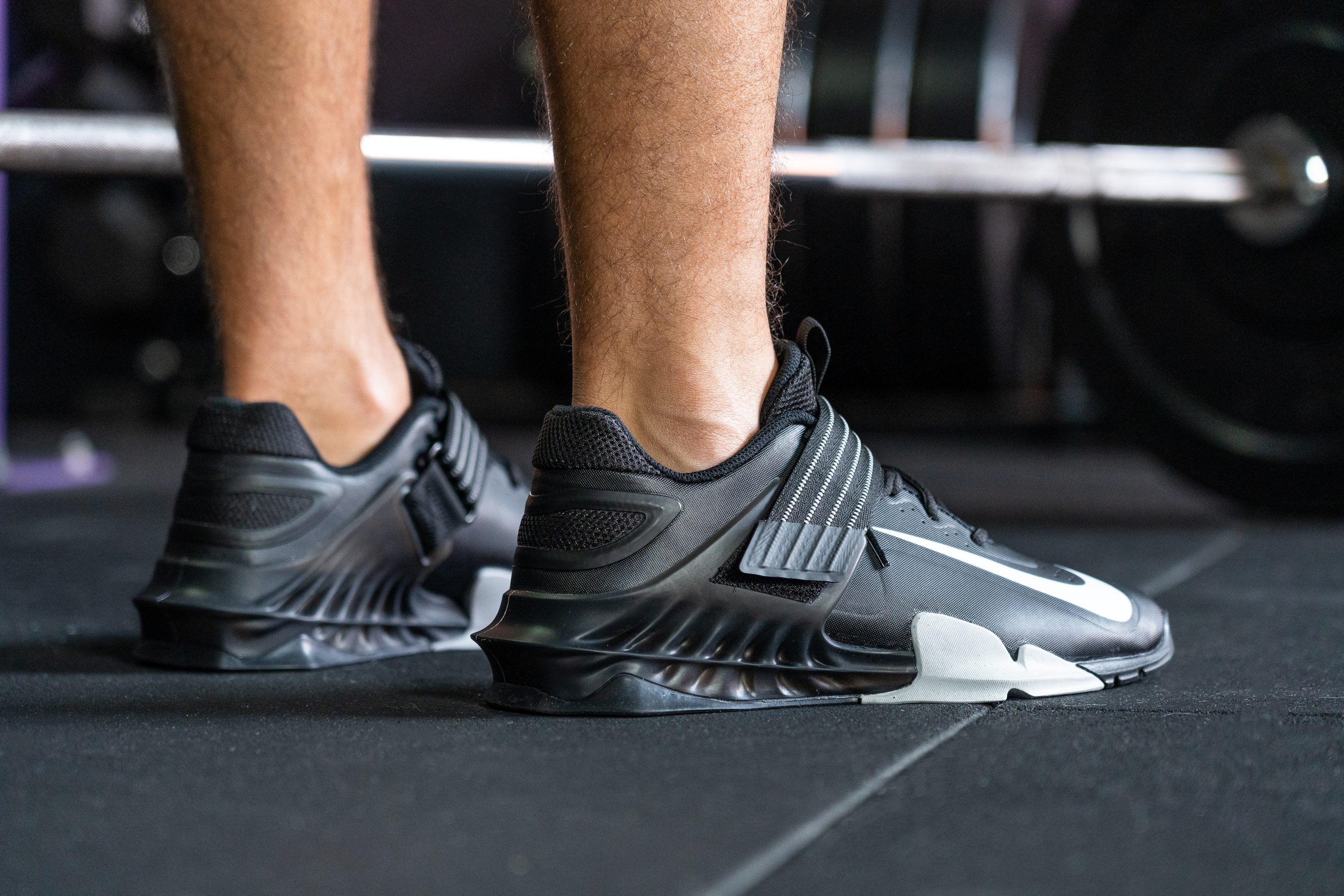
We can see the benefit of softer material in the Nike Savaleos. It helps to keep the shoe's weight down while making it more versatile for exercises outside of lifting.
| Savaleos | 36.5 HA |
| Average | 69.2 HA |
Size and fit
Size
Nike Savaleos fits half size small (53 votes).
Consider sizing up
Width / Fit
We felt like the Nike Savaleos was one of the snuggest lifting shoes we've tested and its gel mold confirmed it.
Measuring the mold in its widest part (between the big toe and the pinke), our caliper showed a below-average reading of 89.4 mm. This is a pretty snug experience for a medium-width shoe.
We recommend that wide-footed athletes look into the Reebok Legacy Lifter III instead.

| Savaleos | 89.4 mm |
Toebox width
The Savaleos also gets significantly narrower towards the toes. With a width of 62.9 mm near the big toe, it is quite narrower than the category average.
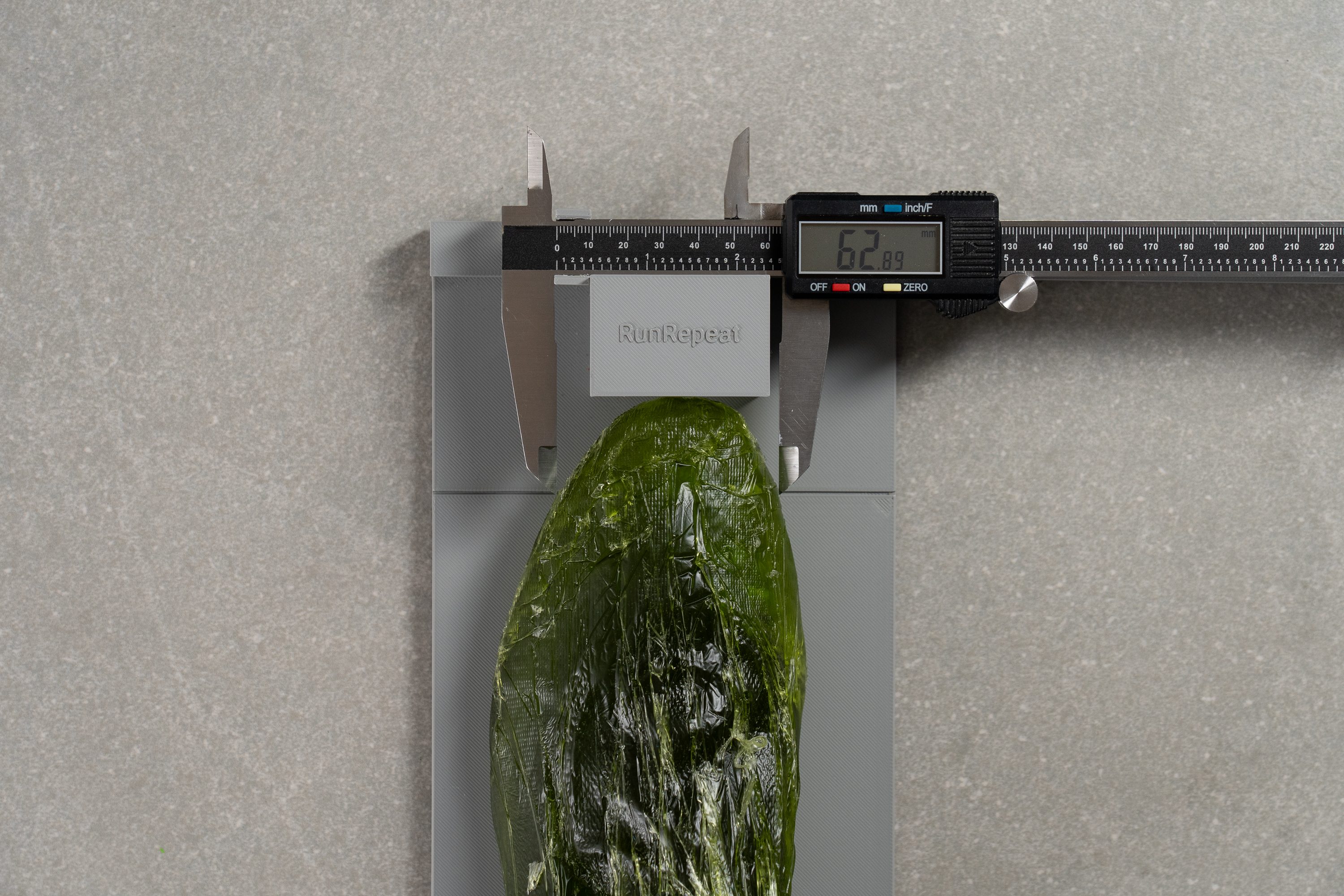
| Savaleos | 62.9 mm |
Toebox height
Not a lot of vertical space either - the Savaleos showed a regular toebox height of 24.3 mm.
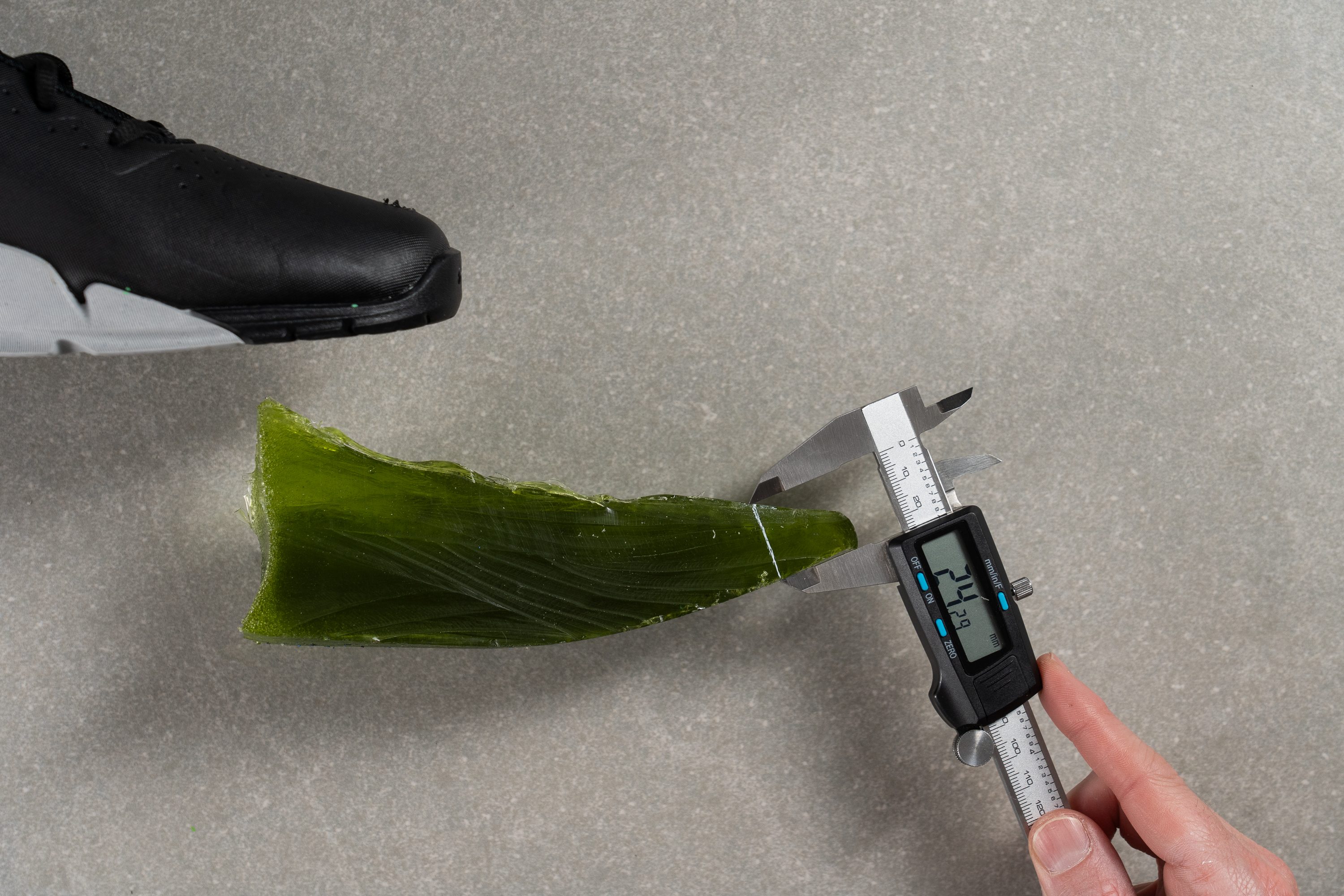
| Savaleos | 24.3 mm |
Velcro strap
However, we are concerned that the Velcro piece is not full-length but is located only at the end of the strap. This could make it a problem for people with high arches to customize the fit.
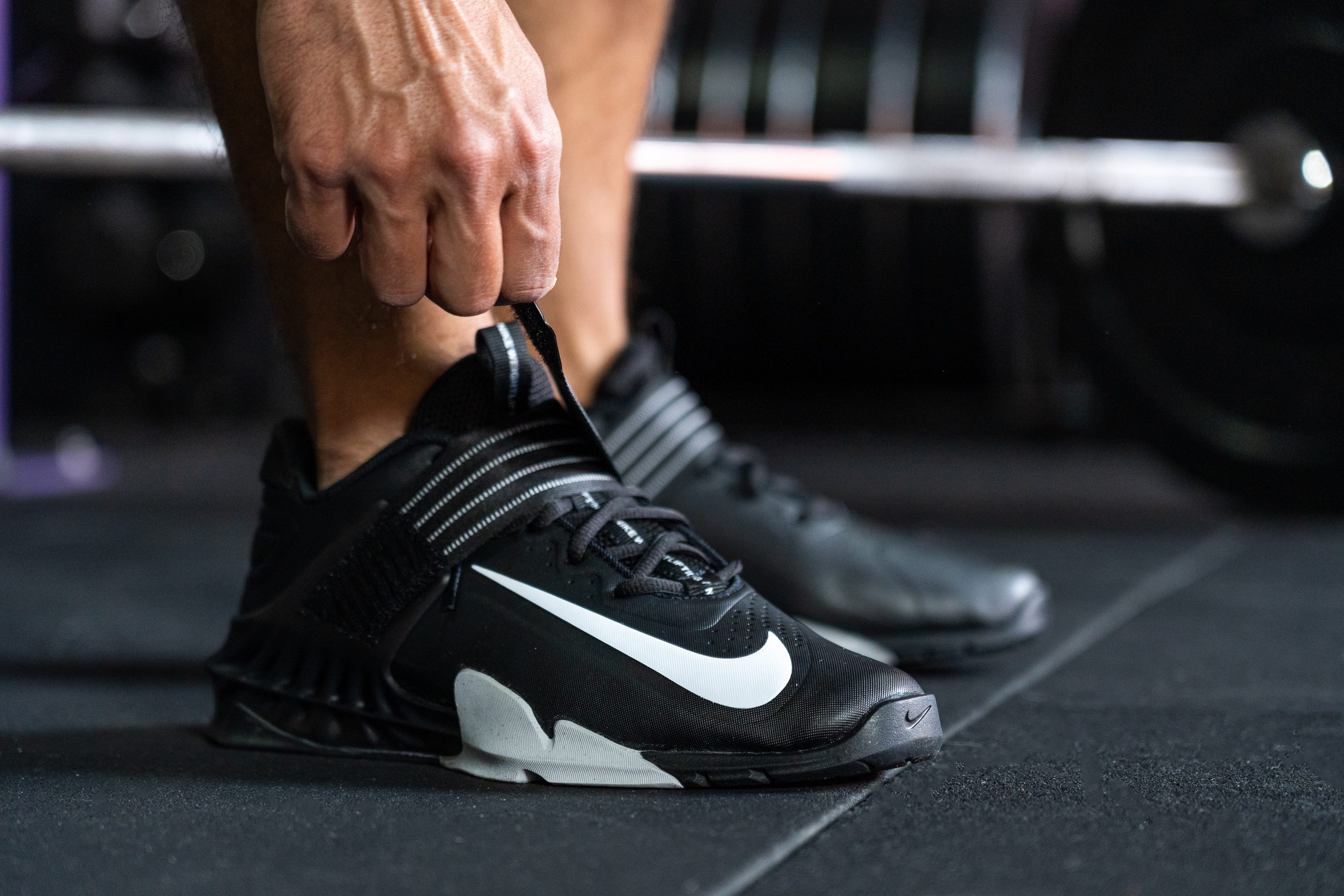
Stability
Lateral stability test
Assessing how steady the Nike Savaleos is by actively shifting our ankles, we can tell that it is quite stable but definitely not as planted as the big boy lifting shoes.
In the video below, you can see how the same movement is notably more limited in the Nike Romaleos 4.
Torsional rigidity
If you have flat feet or overpronation, we wouldn't be worried about rolling the ankle in the Nike Savaleos. Its torsional rigidity is on par with all the other lifting shoes we've tested.
A solid 5 out of 5!
| Savaleos | 5 |
| Average | 4.3 |
Heel counter stiffness
Squeezing the heel counter, we were also pleasantly surprised with its stiffness, both in hand and around the ankle.
We gave it the highest (5/5) rating, feeling the benefits of its secure heel clutch.
| Savaleos | 5 |
| Average | 4.8 |
Midsole width - forefoot
For a shoe that is not intended for lifting only, the Nike Savaleos has an impressively wide platform.
It features diamond-shaped outriggers, similar to the Romaleos, to provide stability without being too bulky.
At the widest part of the forefoot, our caliper shows 116 mm. Significantly wider than the average of lifting shoes!

| Savaleos | 116.0 mm |
| Average | 107.7 mm |
Midsole width - heel
Wide outriggers are present in the heel too.
Measuring in at 94.3 mm between the widest points of the heel, we found it to be wider than average.
We felt incredibly surefooted pushing off such a wide base!

| Savaleos | 94.2 mm |
| Average | 86.7 mm |
Flexibility / Stiffness
As a training shoe that's supposed to "do it all," we expected the Savaleos to have a good flex in the forefoot...And it does!
It only took 15.1N of force to bend the shoe to a 30-degree angle, according to our shoe flexing tester. This made the Savaleos way more agreeable for lunges, planks, and burpees compared to a traditional lifting shoe.
For comparison, it took 30.0N (50% more!) to bend the Nike Romaleos 4, the brand's more standard lifter.
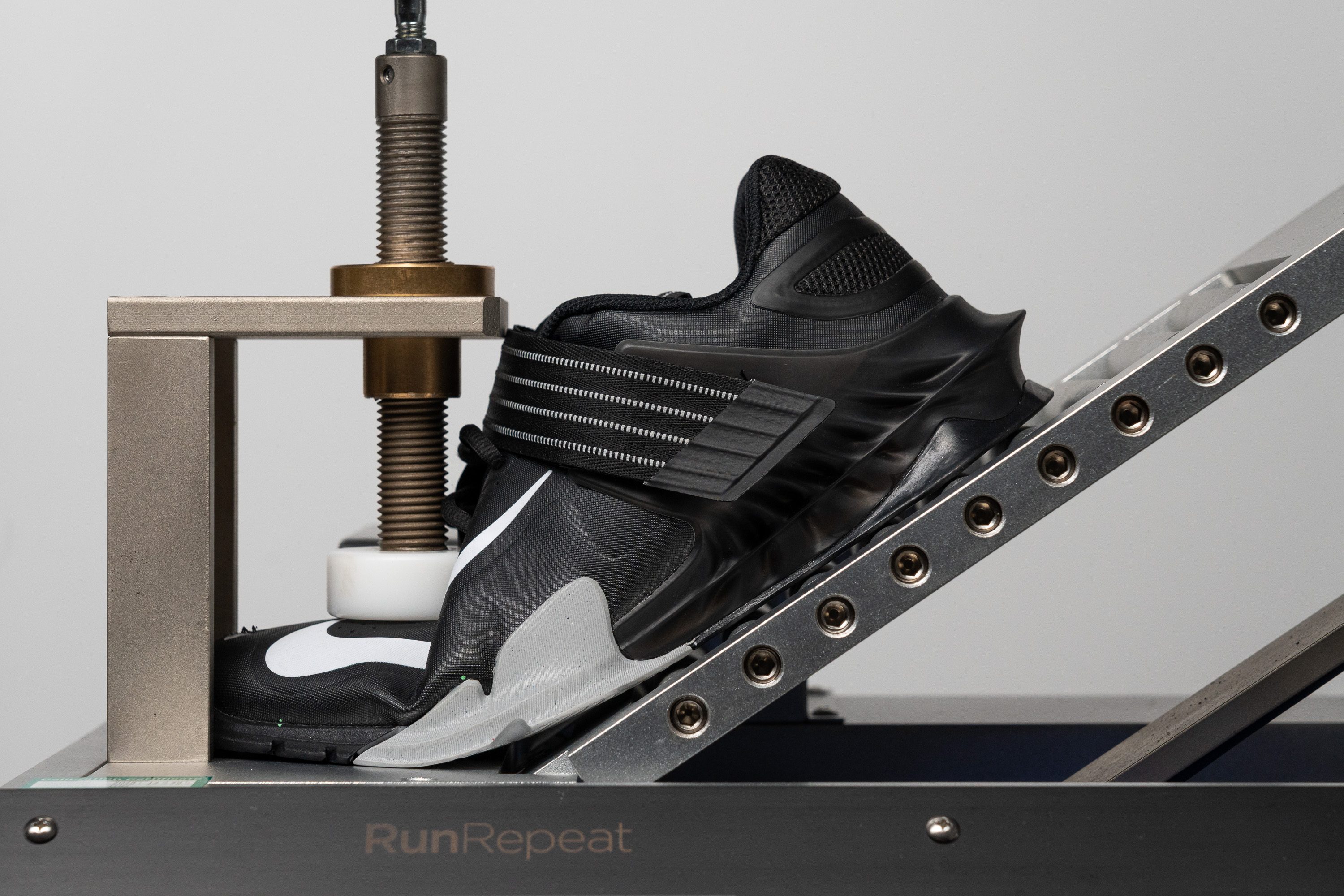
| Savaleos | 15.1N |
| Average | 15.8N |
Weight
The Nike Savaleos is one of the lightest weightlifting shoes we've ever seen!
Because it is built as a lifter-trainer hybrid, the shoe cuts down on the bulk of traditional lifting shoes. It tips the scale at only 14.8 oz (420g), while its older sibling, the Romaleos 4 weighs in at 20.1 oz (571g).
Its lightness makes the Savaleos more suitable for jumps and other agile exercises from the WOD, which is not the case for traditional lifters.
| Savaleos | 14.8 oz (420g) |
| Average | 17.5 oz (497g) |
Breathability
Lifting shoes are notorious for their lack of breathability. That's because they typically use genuine or synthetic leather for their uppers. And the Nike Savaleos is no exception.
But to our surprise, the shoe performed a little better than other lifters in our fog-machine test. Based on the amount of smoke passing through its upper, we rated it as 3 out of 5, which puts it into the breathable range.
In the transparency test below, we can clearly see what helps the shoe stay ventilated. There is mesh fabric on the tongue as well as perforations on the toebox.
Taking photos of the upper through our microscope, we get a better view of the shoe's ventilation holes.

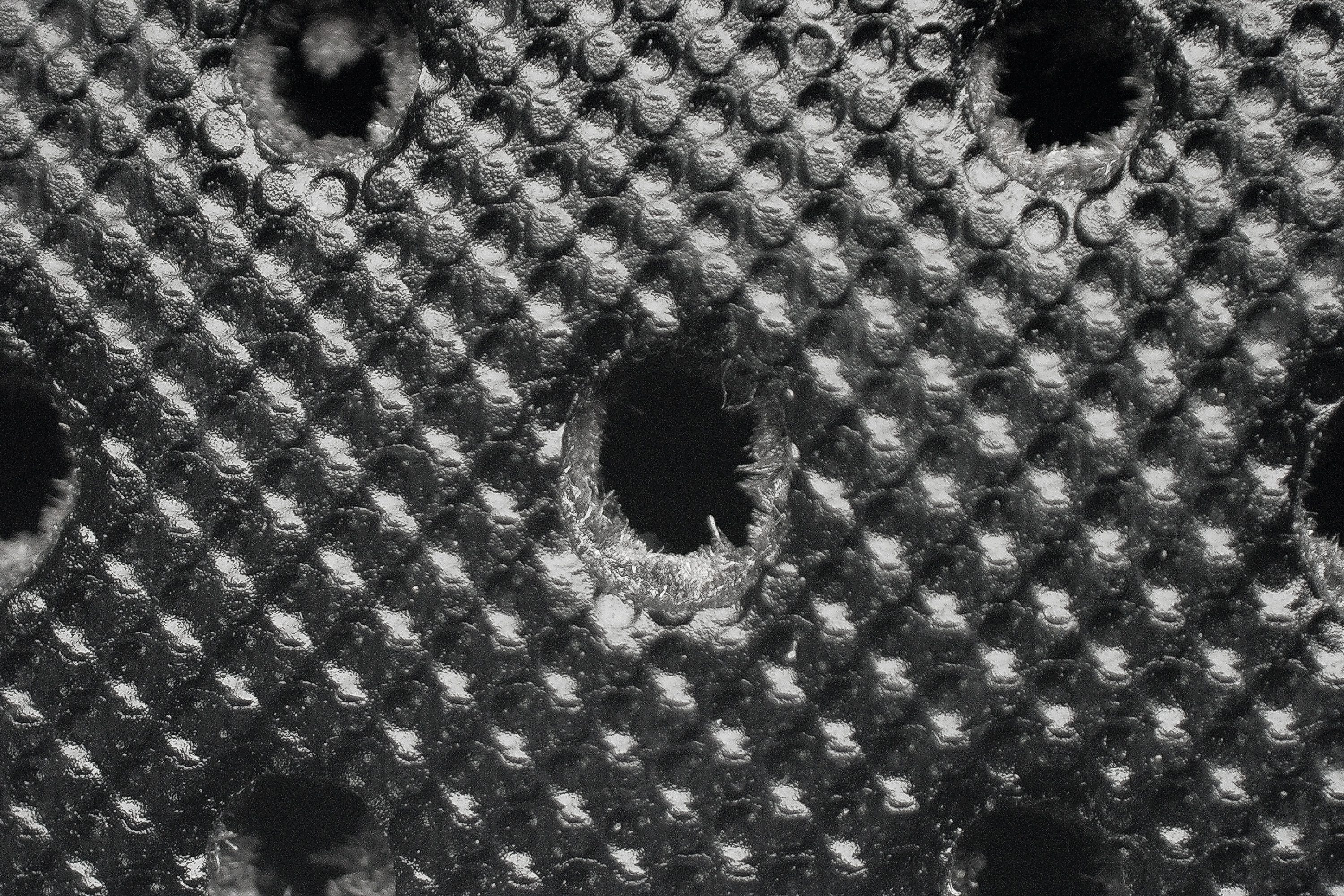
| Savaleos | 3 |
| Average | 2 |
Durability
Toebox durability
Our initial impression of the shoe's polyurethane upper material was not very positive. It felt somewhat cheap in hand and creased too easily as we bent the feet.
Running our wear resistance test with a Dremel, we got a confirmation - this is not the most durable upper. Based on the damage caused by applying the tool for 12 seconds, we gave the Savaleos only 3 out of 5 for its toebox durability.
The most durable lifter on our list by far is the Reebok Legacy Lifter III (a solid 5 out of 5). Its genuine leather cover is second to none.

| Savaleos | 3 |
| Average | 3.5 |
Heel padding durability
The padding on the Savaleos' heel collar also left us wanting.
After 4 seconds under the Dremel, the lining and foam received more damage than the other lifting shoes in our lab. We rated the durability of this part as 3 out of 5, less than the average.
But given that the Nike Savaleos is $80 cheaper than premium lifting shoes, we consider it a fair trade-off.
| Savaleos | 3 |
| Average | 3.6 |
Outsole hardness
On a positive note, the rubber outsole on the Savaleos looks promising in our durability tests.
First of all, the Savaleos uses a pretty hard rubber compound. Pressing a durometer against it, we found that it is as hard as 89.8 HC. This is notably denser than the average of lifting shoes.
In our experience, the firmness of rubber correlates with its wear resistance.

| Savaleos | 89.8 HC |
| Average | 85.1 HC |
Outsole thickness
We also discovered that the shoe's outsole is thicker than average.
Using a caliper, we measured it at 4.0 mm. For reference, the rubber on advanced lifters like the Nike Romaleos 4 and the Legacy Lifter III is a little thinner - 3.8 mm and 3.4 mm respectively.
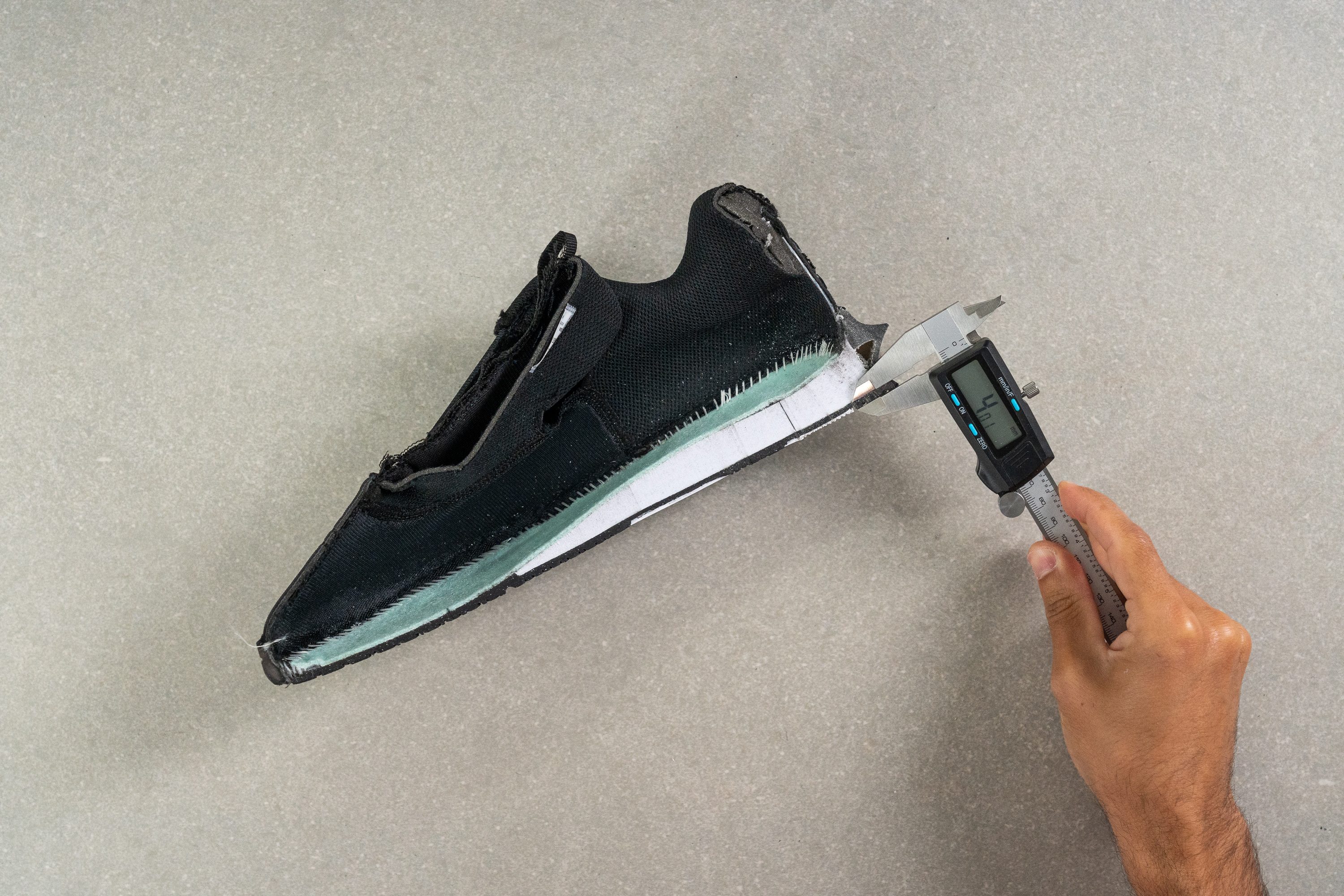
| Savaleos | 4.0 mm |
| Average | 3.6 mm |
Misc
Insole thickness
The Savaleos comes with a thinner-than-average insole. But we never felt like something was lacking in the shoe. At 4.8 mm, the insole provides just enough underfoot padding.
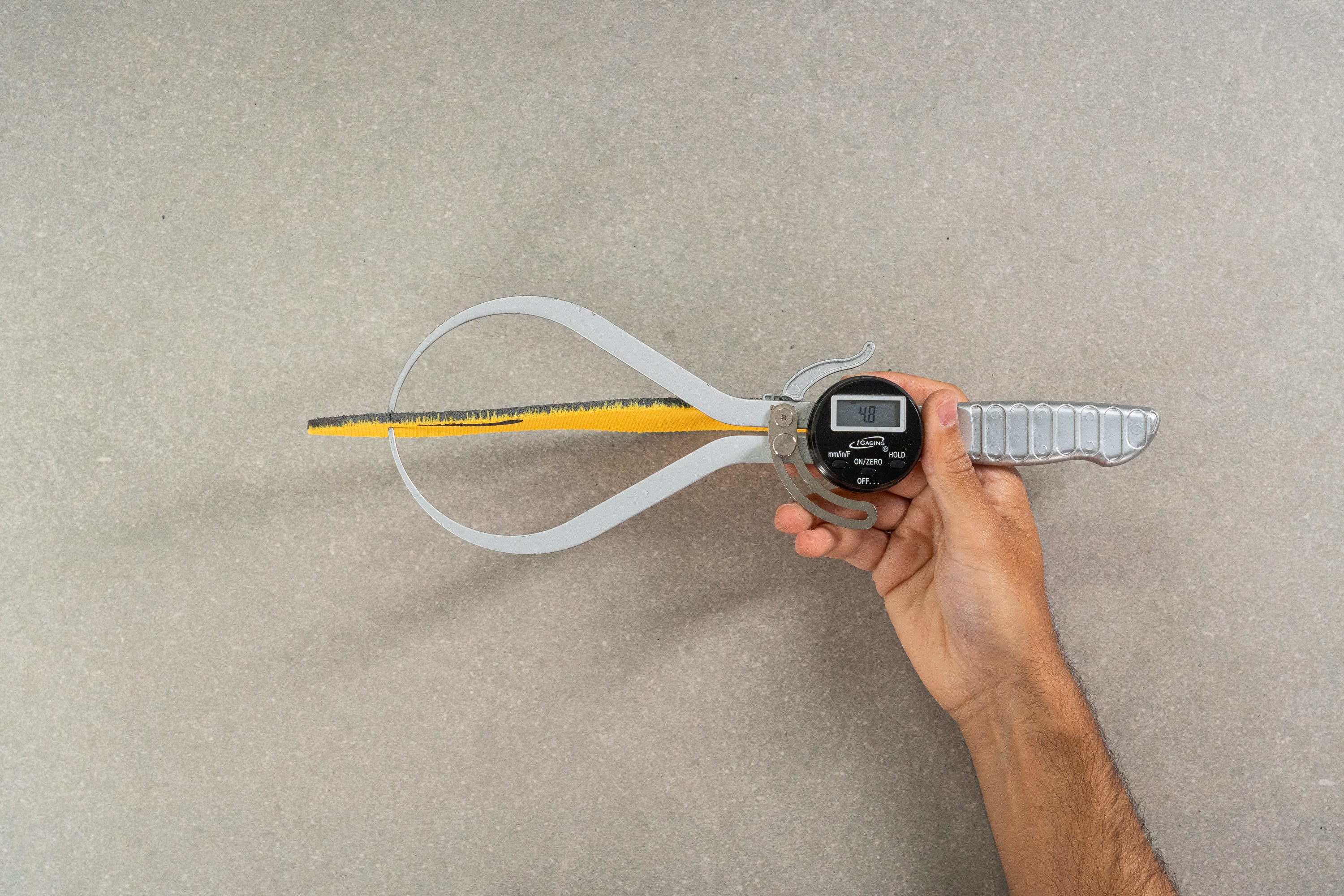
| Savaleos | 4.8 mm |
| Average | 5.9 mm |
Removable insole
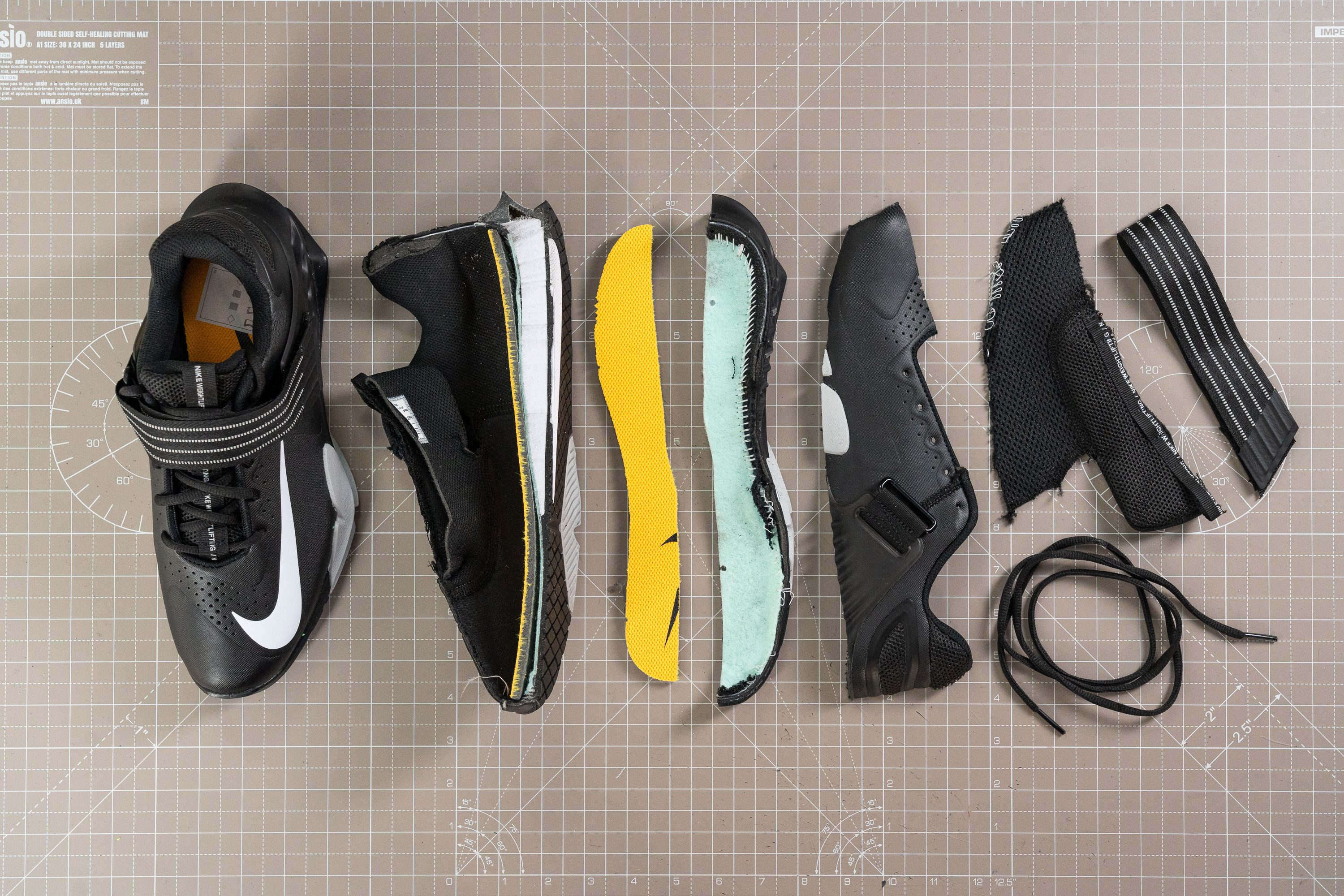
Tongue padding
The in-shoe padding is just right in the Nike Savaleos. We measured the tongue thickness at 4.5 mm. It is a little thinner than average but never took away from the overall comfort.

The shoe is also amply padded around the ankle collar.
| Savaleos | 4.5 mm |
| Average | 5.0 mm |
Tongue: gusset type
We love gusseted tongues! Even if they are semi-gusseted.
They make us feel so much more confident and locked in when moving, especially side-to-side. And should we add that the tongue never ended up shifting in the Savaleos?
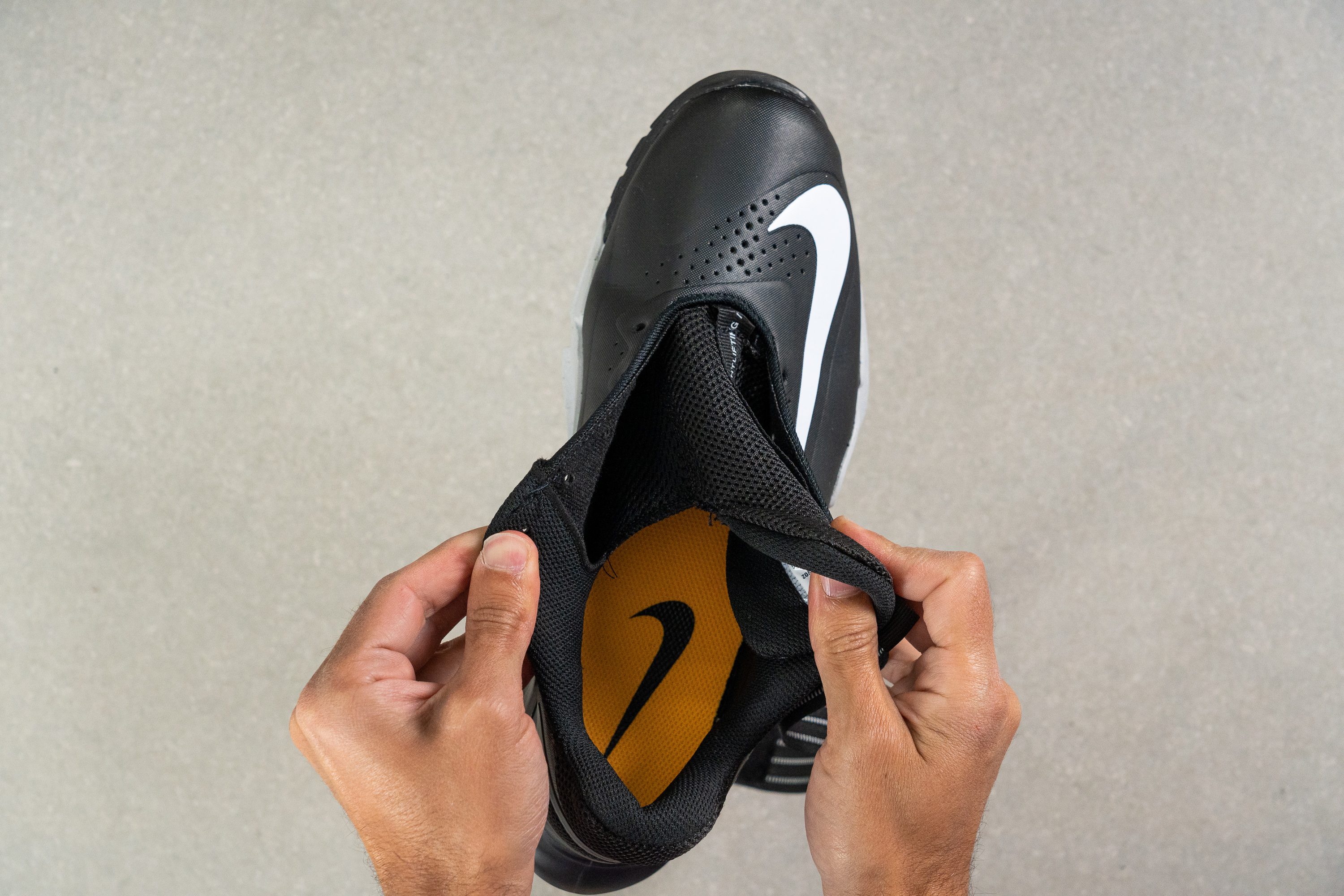
| Savaleos | Both sides (semi) |
Heel tab

